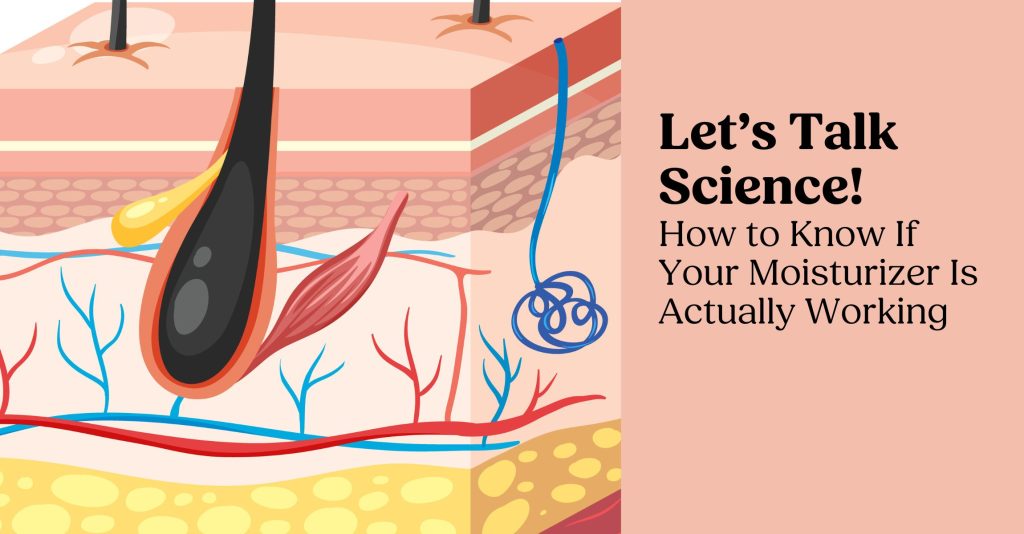
How to Know If Your Moisturizer Is Actually Working
Ever wonder if your moisturizer is really doing anything—or if you’re just giving your skin a nice temporary drink? The answer lives in understanding your skin itself. When you know what each layer does and how moisturizers interact with them, it becomes much easier to tell if yours is actually pulling its weight.
Your Skin, Layer by Layer
The Epidermis (the surface you can see and touch)
This is the layer your moisturizer meets first—and where most of the magic happens. The very top of the epidermis, called the stratum corneum, is like a brick wall: skin cells are the bricks, and lipids like ceramides, cholesterol, and fatty acids are the mortar holding it all together.
When that “mortar” gets weak, water evaporates through transepidermal water loss (TEWL), and your skin starts to feel tight, rough, or flaky. A good moisturizer reinforces this barrier, fills the gaps, and keeps water where it belongs.
The Dermis (the middle, working layer)
About 90% of your skin’s thickness comes from the dermis. This layer holds collagen (for strength) and elastin (for flexibility). It’s also home to blood vessels that feed the upper layers and oil glands that keep skin supple. Over time, keeping the epidermis hydrated protects this layer too, because less TEWL means less stress on the whole system.
The Hypodermis (the cushioning base)
This fatty layer keeps you insulated and protects your muscles and bones. Moisturizers don’t reach this deep, but keeping the top layers strong supports the whole structure.
How Moisturizers Actually Work
Moisturizers aren’t just “hydration in a jar”—they work through a mix of three ingredient types, and a good one has all three:
-
Humectants: These are water magnets, pulling moisture into the skin. Hyaluronic acid and glycerin are two of the best-known. Fun fact: studies show humectants can draw water from the air and from deeper layers of your skin—but they need backup to keep it from evaporating.
-
Emollients: These smooth and fill the gaps between skin cells, helping that “brick wall” stay flexible and intact. Ceramides and plant oils are great emollients.
-
Occlusives: These are the sealers, creating a thin layer to trap moisture in. Even plant butters or lighter oils can work as occlusives. Research shows occlusives can cut water loss by up to 50–98% when combined with humectants and emollients.
When all three are present, you’re not just adding surface moisture—you’re actively supporting your barrier function and reducing TEWL.
Signs Your Moisturizer Is Actually Working
-
Your skin stays soft past the first hour. If you apply and feel comfortable all day (not tight or thirsty by lunchtime), that’s a win.
-
Flakiness fades. Smoother texture means the stratum corneum is staying hydrated and intact.
-
Less redness and sensitivity. Studies show that well-formulated moisturizers can reorganize barrier lipids and calm inflammation over time.
-
Improvement builds gradually. A good moisturizer doesn’t just give instant relief—it makes your skin stronger the longer you use it.
The Bottom Line
A moisturizer that works is more than a quick fix—it’s barrier support, hydration, and protection for every layer of your skin. If your skin feels soft and balanced for hours, flakes disappear, and you notice steady improvement over time, you’ve got a formula that’s truly doing its job.
